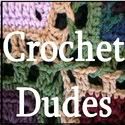
If you didn't realize it, I am a book collector. I haunt the bookstores, looking for new crochet and knitting books. I search Amazon constantly, looking to see what new books are coming. Sometimes I'm disappointed in them, when they finally do get published, but most of the time I'm pleased. And I usually buy them.
I have been waiting anxiously for Linda Schapper's new book, The Complete Book of Crochet Border Designs, and was surprised this morning when I went to the bookstore and saw it - it wasn't supposed to be published until January. Of course, I had to buy it! I waited until I was home, having lunch, before I even opened it.
I read the introduction - it was very informative about the layout of the book. Three ways to look at the patterns are included: the picture (very clear, worked in white yarn/thread, and photographed on a colored background - easy to "read"), the stitch diagram, and the written directions. Schapper says to work from the diagram, if you can read stitch symbols (which she provides), or work from the written pattern, and look at the stitch diagram and the picture if you have problems with the written pattern. She also suggests that it would be a good idea to learn how to read stitch diagrams. Then you can "read" Japanese, French, and Russian patterns. In the front of the book she includes basic (and not so basic) stitch directions, with great diagrams by Karen Manthey.
So, I was really anticipating wonderful things when I opened the book to Chapter One. (There are 17 chapters.) I scanned the first two chapters, and liked the patterns I saw. Then, I turned to Chapter 3, Double Crochet, Single Crochet, Chains, & Picots. I saw the first pattern, #28, and it seemed like something that I was looking for, for a project I am doing. So, of course, I looked at it closer. And closer. Something seemed wrong. I read the directions, I looked at the stitch diagram. And then I looked at the photo of the stitches. The directions matched the stitch diagram, but the photo was another pattern. Similar, but not the same. This could be confusing if someone looked at the picture for clarification of the stitch diagram or the written directions. Now, I promise, I was not looking for errors. But I must be cursed, because when I read a book, or look at a pattern book, the mistakes just jump out at me. Except my own! :-)
I finished looking at the rest of the book, without really studying the patterns (there are 342!). I was impressed with the variety, and saw many of them that could be used as fabric patterns, not just edging patterns. So - I do highly recommend this book. And no, this is not one that I was disappointed with, even with that error. I think it will be an important addition to anyone's library of stitch dictionaries. (One can never have too many of those!) But remember to look carefully at the photos and the stitch diagrams, and read the directions.










